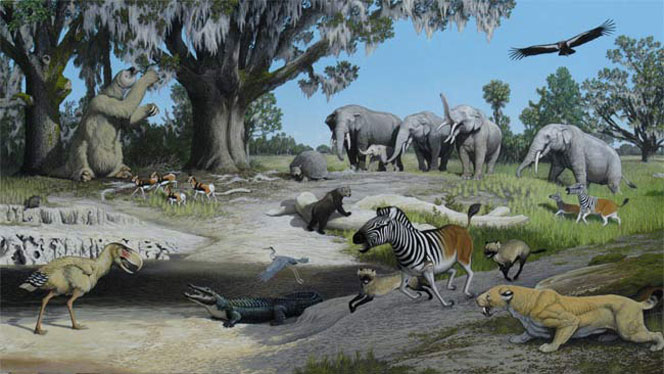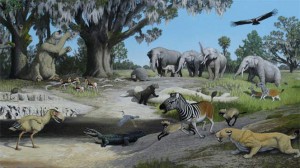February 9, 2014 – Yale University researchers describe a much warmer world in the Pliocene, some 3 million years ago, in their latest publication Strong chemistry-climate feedbacks in the Pliocene appearing in the journal of the American Geophysical Union.
In their study CO2 was not the primary cause for atmospheric warming of the time. Levels were similar to those we are experiencing today. Instead concentrations of tropospheric ozone, methane and aerosols, the latter emitted by a forest and savannah-dominated planet, altered Earth’s radiation balance and raised temperatures as much as 2 to 3 degrees Celsius (3.6 to 5.4 Fahrenheit).
“The discovery is important for better understanding climate change throughout Earth’s history, and has enormous implications for the impacts of deforestation and the role of forests in climate protection strategies,” states Nadine Unger, Assistant Professor of Atmospheric Chemistry, Yale School of Forestry & Environmental Studies.
As lead in the study Unger and her team used NASA’s Goddard Institute for Space Studies Model-E2 global Earth system to simulate the environment of the Pliocene, a period when Earth was heavily forested contributing to warming through what is known as the albedo effect.
For those unfamiliar with the term “albedo effect,” it refers to how solar radiation gets absorbed or reflected by different Earth surface conditions. Forests absorb the energy from solar radiation while polar ice caps and snowfields reflect it back into space.
Unger further states, “The traditional view is that forests affect climate through carbon storage and by altering the color of the planet’s surface, thus influencing the albedo effect. But as we are learning, there are other ways that forest ecosystems can impact the climate.”
What Unger is referring to are the aerosol compounds emanating from forests and there potent ability to contribute to the atmospheric greenhouse effect.
During the Pliocene we know that Earth’s surface was extensively forested including much of the Arctic. We also know that precipitation was much greater to the extent that those areas dominated by deserts today had savannah-like climate conditions. Wildfires were frequent and the burning of forest and savannah with no humans to put these conflagrations out further contributed to increases in atmospheric carbon and aerosols.
For those of you who are climate change skeptics you may think “ahah, you see CO2 doesn’t cause climate change.” But this would be wrong conclusion. As Unger explains, “we might do a lot of work to reduce air pollution from road vehicle and industrial emissions, but in a warmer future world the natural ecosystems are just going to bring the ozone and aerosol particles right back…….reducing and preventing the accumulation of fossil-fuel CO2 is the only way to ensure a safe climate future now.”















[…] New Journal Article Sheds Light on Past Earth Warming Events https://www.21stcentech.com/headlines-journal-article-sheds-l.….ng-events/ […]